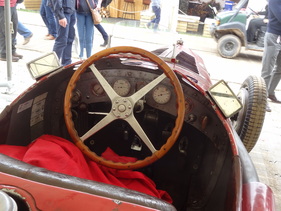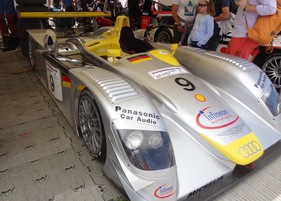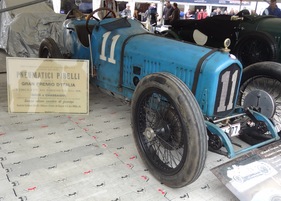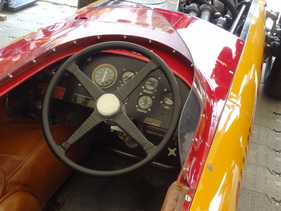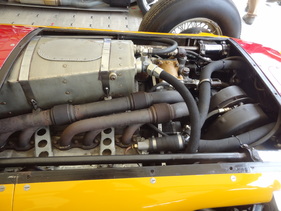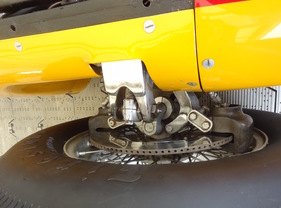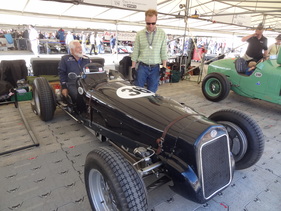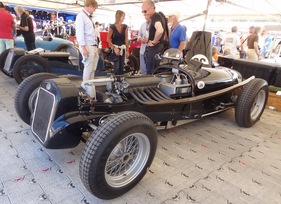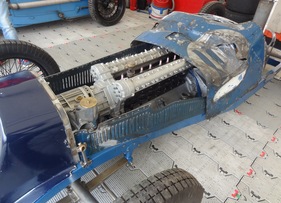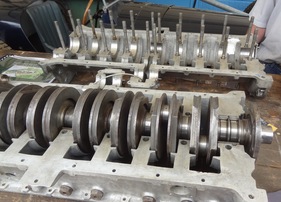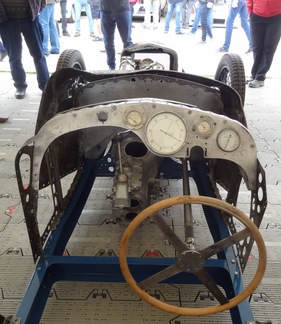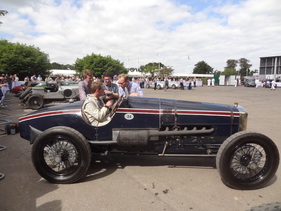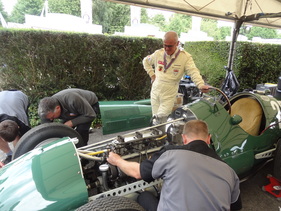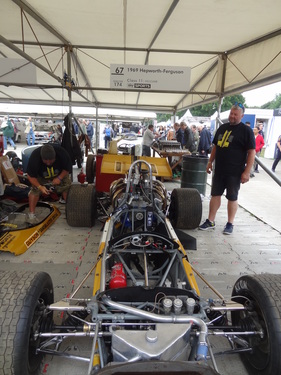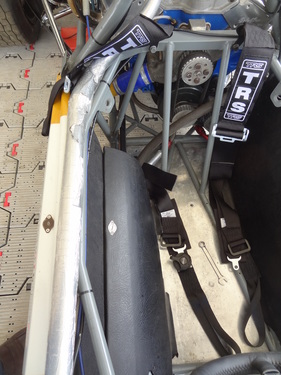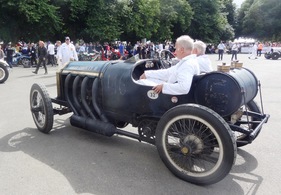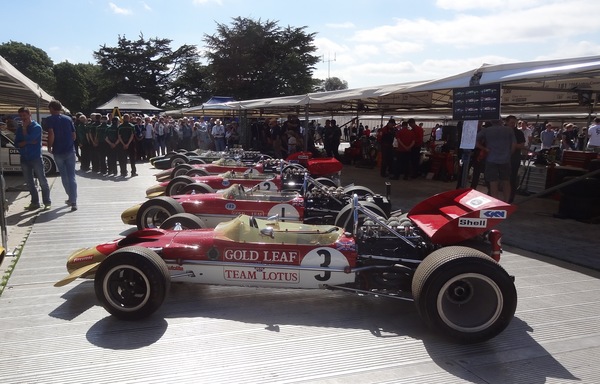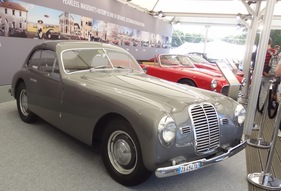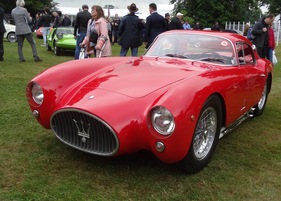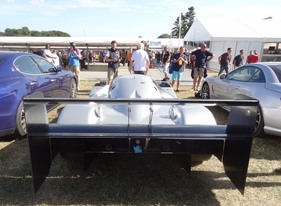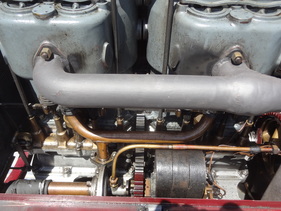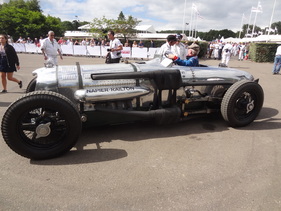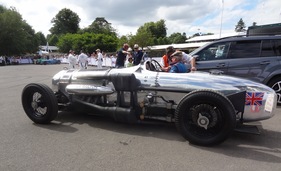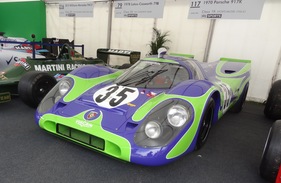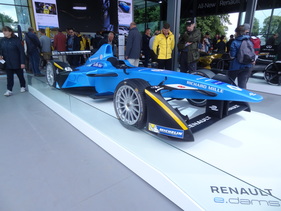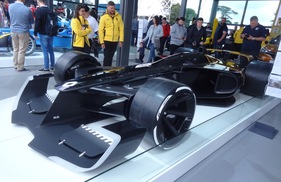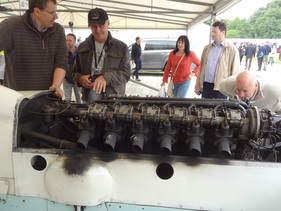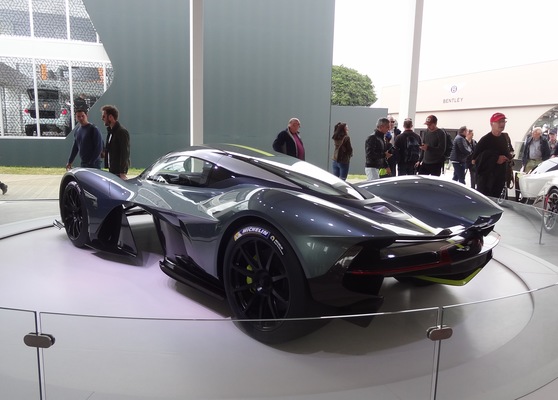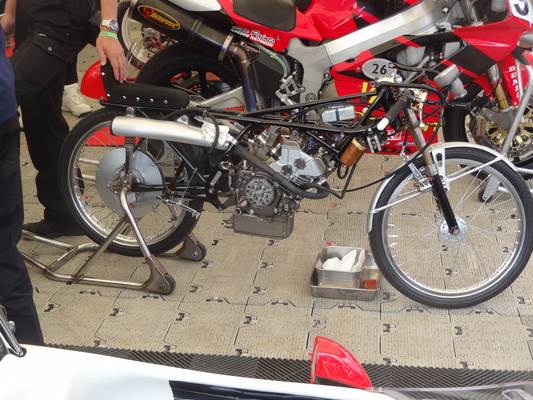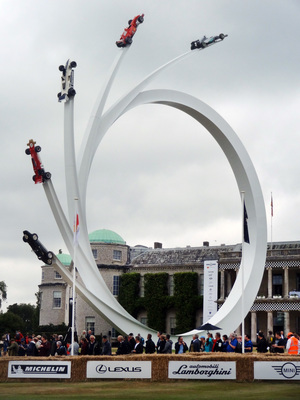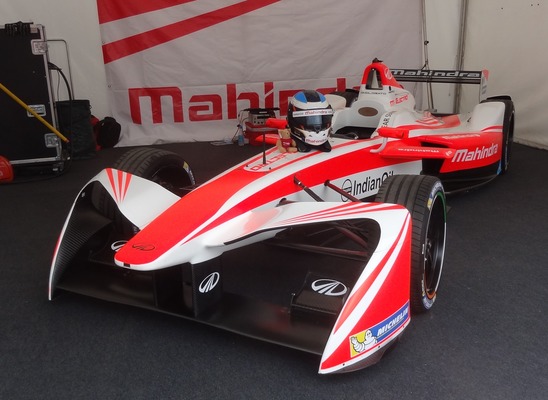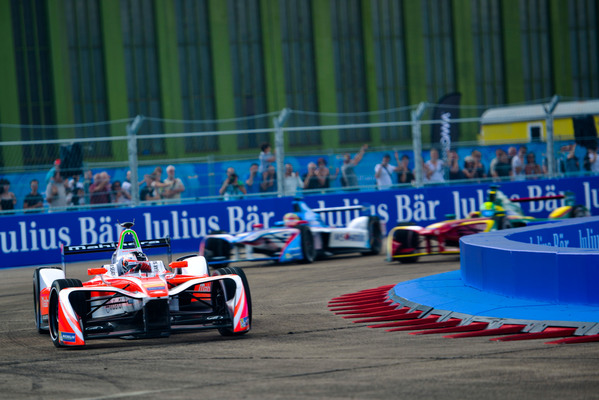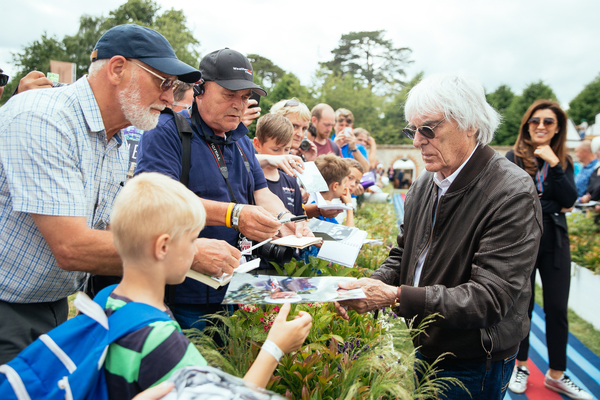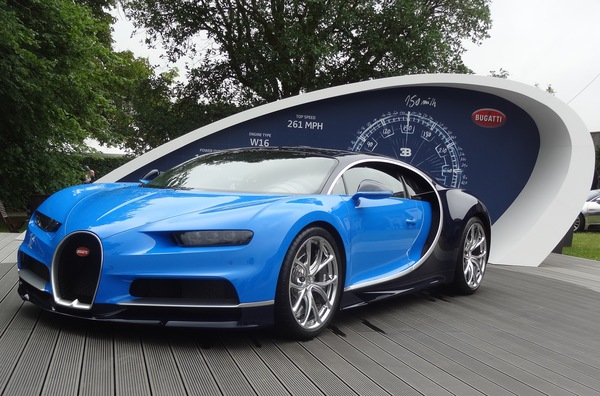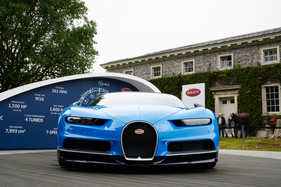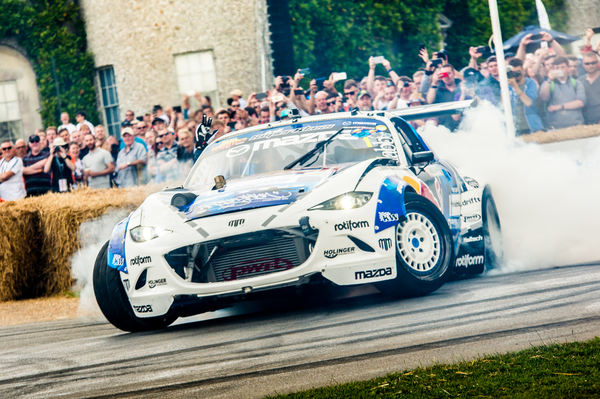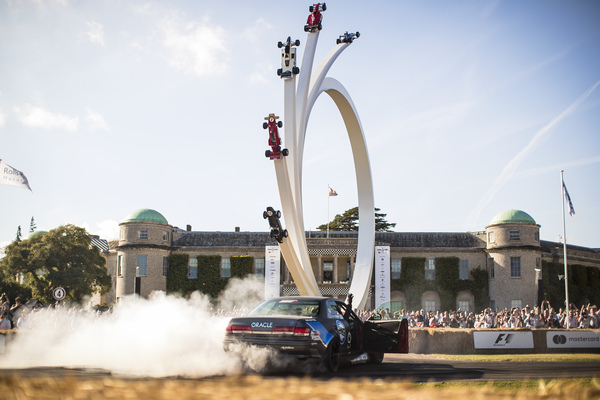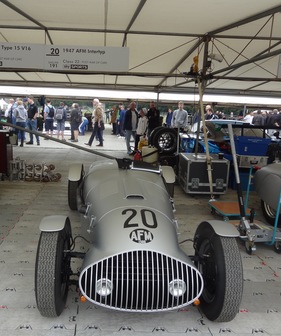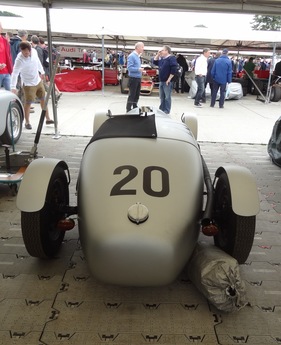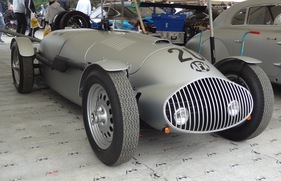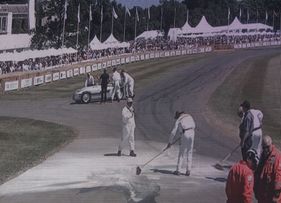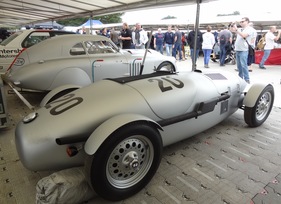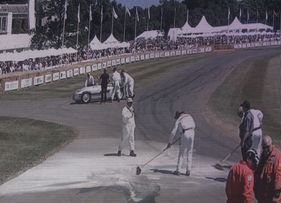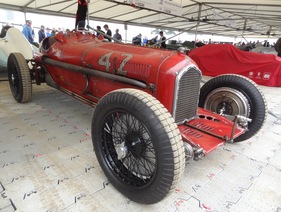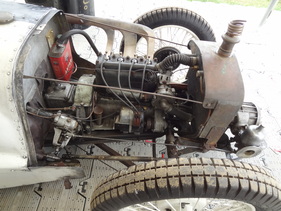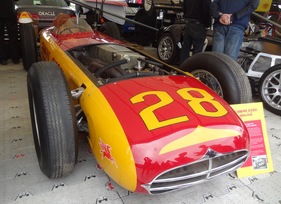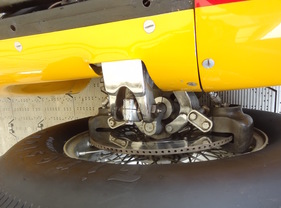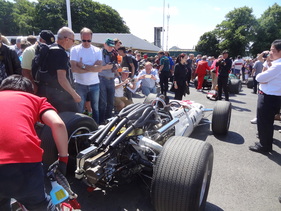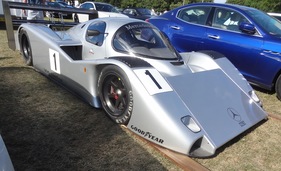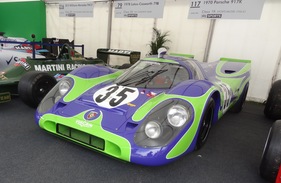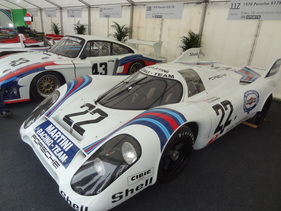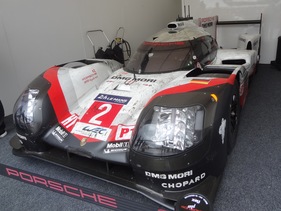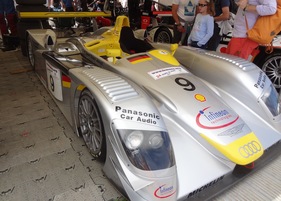What began in 1993 as an invitation to a "garden party" with old racing cars has developed into the largest motorsport event in the world in its 25 years of existence. Both in terms of the number of spectators - 150,000 to 180,000 - and the number of participants and vehicles.

A motor show on the move
Lord March and his team have recognized the signs of the times and developed the event from a meeting of "old" racing and sports cars into a "Moving Motor Show", which this year included vehicles from 1902 to 2017, from the classic petrol engine to the Cummins Diesel from 1952 and the diesel-powered Le Mans winner Audi R10 from 2006, to Formula E with vehicles from Renault and Mahindra. Finally, the icing on the cake for the racing of tomorrow was Green4you by Don Panoz, who plans to tackle the 24 Hours of Le Mans next year with an all-electric racer.
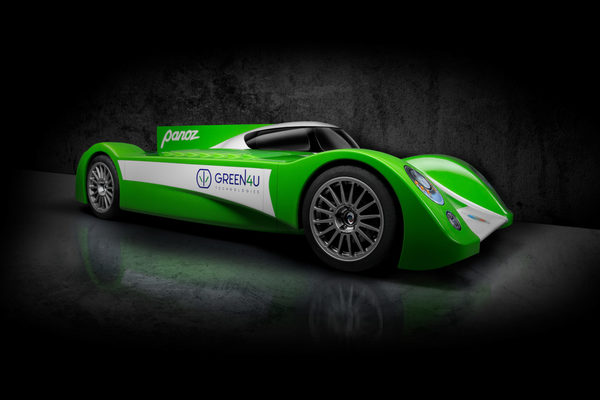
With this range of vehicles, supplemented by a large motorcycle field and a separate demonstration track for rally cars, as well as the opening of the FOS Future-Lab, Goodwood is elegantly counteracting the problem of ageing or a lack of young talent that can be observed in the old car scene, from which many clubs, among others, suffer.

The Festival of Speed is clearly a commercial event, but it has nonetheless retained the original character of the "garden party" in a likeable way.
Young and old in the cockpit
The drivers ranged from 27-year-old Finn Valteri Bottas in the current Mercedes Formula 1 to 81-year-old American George Wingard in his 1914 Mercedes Grand Prix.

Similarly, the spectators cover the spectrum from baby carriage age to the elderly. They all paid homage to this year's theme: "Peaks of Performance - Motorsport's Game Changers".
A walk through the paddock
Among so many vehicles and attractions, a selection is naturally always personally colored. Nevertheless, we pick out a few highlights here in a walk through the paddock to convey the fascination of the festival.
The early AFM from Germany
Alongside Ernst Loof (Veritas) and Petermax Müller (VW Spezial), Alex von Falkenhausen (AFM) was one of the pioneers of German racing after the end of the war. The BMW 328 engine was available for the two-liter class and the VW engine for the 1100cc class.
As an engineer, Alex von Falkenhausen was well aware of the speed limitation of the 328 engine with its 96mm stroke and had considered reducing the displacement to the then valid 1.5 liters with a modified crankshaft with a stroke reduced to 73mm and longer connecting rods, while at the same time increasing the engine speed.
He then installed this engine in the two-seater, which was designated as an inter-type - meaning it was used on the race track and on the road.
Austrian restorer Christian Nell found the remains of this vehicle and used them to build the racer pictured here.
It was used and driven for the first time by the Viennese Dieter Quester, a well-known figure with BMW competition cars and author of the self-deprecating book "Wie komm ich bloß vom Rennsport los?". As you can see, he hasn't quite succeeded yet.
As a true racer, Quester also wanted to take part in the time trial, appropriately known as the "shootout". During training, however, there was an oil leak on which he spun and the car caught fire for a few seconds. This meant that his dream of a place of honor went up in smoke. After all, his time of 77.41 seconds for the 1,860 m in practice put him 29th out of 43 starters who were going for time.
Specials
Don Lee was a Californian entrepreneur who raced both a W154 Mercedes and this Alfa P3 with wheel covers at Indianapolis in 1947. He made it to the 121st lap. For years, the engine and car were under separate ownership, but have since been reunited.
One of the cars that attracted a lot of attention was the 1924 Austin Seven Kompressor known as "Mrs. Jo-Jo", which is painted black on the left and white on the right and has a huge supercharger sitting in front of the engine, which is said to inject 60 hp from 749 cc into the engine.
Indianapolis specialties
This 1920 Ballot has both an Indianapolis history, 7th place in 1920, 3rd place in 1922, and a European one in Italy, France and England. Today it is in Austrian ownership and is largely in its original condition! The spare wheel mounted vertically in the rear served as a rear fin.
And for a few months now, the racing car equipped with an inline eight-cylinder engine with overhead camshaft has even been running under its own power, as it proved at Goodwood.
The Cummins Indianapolis racing car with diesel drive, which achieved pole position in 1952 with a training speed of 220.8 km/h, is worth a special mention. The car was equipped by Cummins, a company that still exists today, with a 6.6-liter truck engine that produced 420 hp thanks to turbocharging and was very light thanks to the use of plenty of aluminum.
The body was designed for minimum drag, the engine was installed offset to the left to optimize the centre of gravity for the left-hand course.
Another highlight is the disc brakes on all four wheels.
Rare Delage racing cars
A separate class was dedicated to the 1.5-liter Delage from the 1920s, those unbeatable two-seater Grand Prix cars in the Voiturette class of the time, with the 8-cylinder engine with two overhead camshafts and supercharger, which is now a true art form.
As it was a two-seater, the propshaft could be routed between the seats, allowing the engine to be installed very low in the chassis.
Numerous victories were the well-deserved reward for one of the most advanced designs of its time. The outstanding driver of this car was the Englishman Richard "Dick" Seaman, who attracted the attention of Alfred Neubauer due to his excellent driving style, was brought to Mercedes by Neubauer and promptly won the German Grand Prix in 1938.
The black 1.5-liter Delage with starting number 36, which was referred to as Delage/Walker in the starter list, was unusual. In fact, this example was owned by Rob Walker in 1950, who had the car fitted with a compressorless 2-liter 6-cylinder engine from ERA. Hence the large amount of space in the engine compartment.
70 years of Ferrari
Ferrari 125/166 S 1950: On closer inspection, the car made a fairly new impression, but it also had a two-liter engine installed that was not approved for Formal 1 in 1950. Nevertheless, it was of course a 67-year-old design and had the same problems that we know from the pre-war and early post-war years and which could be described as "Its spark plugs, stupid", to paraphrase Bill Clinton.
And so, together with the owner, the spectators were able to watch the two mechanics from Hall&Hall battling with the spark plugs: unscrewing 12 plugs, inspecting them, screwing in 12 new ones, attempting to start the engine until the external battery became weak, doing the whole thing again .... Later the car drove ....

Many special examples from the seven decades of Ferrari vehicle construction were on site, including a 250 GTO as well as a 330 P4 and a whole phalanx of formula cars.
And other rarities
The Hepworth-Ferguson was worth a second look because of the second part of the name Ferguson. Because this signals "four-wheel drive" to the connoisseur. And the single-seater with the high-mounted Chevrolet engine also had this, with the cardan shaft running past the driver on the right. In its active days, the car was used as a hill-climbing vehicle.
The Mercedes Grand Prix car from 1914, which was driven by the American collector George Wingard, who also owns the 1913 Blitzen Benz that surfaced in England in 2001, is already over a hundred years old.
A significant example of the three-liter Formula 1 era is undoubtedly the 1967 Honda RA 300, which was developed under the motto "Do Whatever it Takes to Win" and in which John Surtees, who was different last year, took the second victory for Honda 50 years ago.
The Mercedes-Benz (Sauber) C292, which was developed for the 1992 Group C season but could never be used due to Mercedes' withdrawal from sports car racing, has hardly ever been seen. The car is not yet ready to drive due to a lack of electronics and dashboard, but is to be made ready for use.
The two Porsche 917s were static exhibits. Starting number 22 is the 917 driven to victory by Helmut Marko and Gijs van Lennep in 1971 with the record distance of 5335.313 km in 24 hours.
The importance of the Goodwood Festival of Speed can be seen in the fact that Porsche AG has brought both 2017 Porsche 919 LMP1 cars to England.
While start number 1 was beautifully cleaned in its delivery condition, the winning car with start number 2 was left with all the traces of the 24 hours in style.
Tom Kristensen as guest of honor
The star guest at this year's Festival of Speed was Le Mans record winner Tom Kristensen, who not only celebrated his 50th birthday but also had an entire racing class dedicated to him. And, of course, Tom also drove some of the racing cars of the time himself.
Incidentally, the 25th edition of the Festival of Speed was dedicated to Bernie Ecclestone. The sculpture mounted centrally in front of Goodwood House symbolized the five decades of his work with corresponding racing cars.
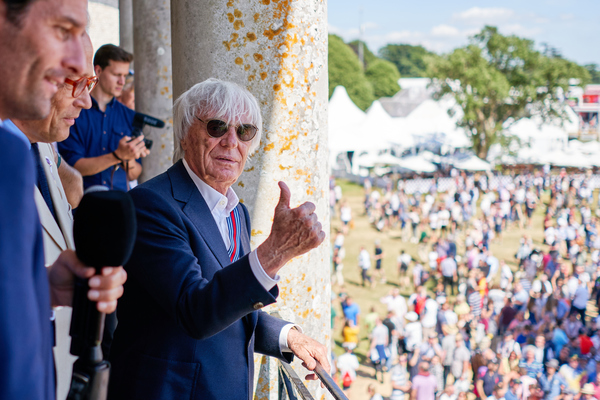
Ecclestone began his career as a driver, then became team principal, until he shaped the highest racing series according to his ideas as Formula 1 boss.
A driver between two worlds
Most records are short-lived, but some last a long time. Few last forever - like the Moss/Jenkinson record at the 1955 Mille Miglia.
The 41.6 seconds that the then 22-year-old Nick Heidfeld burnt into the asphalt on the 1860 meters of the Goodwood Hillclimb in 1999 belong to the middle category. This corresponds to an average speed of 161.554 km/h - with a standing start! Heidfeld was in Mika Häkkinen's 1998 world champion car.
Nick Heidfeld, himself active in Formula 1 for many years, has recognized the signs of the times and is now driving electrically, more precisely, he is one of two drivers of the Indian Mahindra Racing team, which recently celebrated its first victory in Berlin.

This leap from the world of classic Formula 1 with combustion engines into the future of electromobility was the occasion for an interview with the record holder.

Martin Schröder: Mr. Heidfeld, we meet here at Goodwood, the track where you have held the track record for 18 years now at 41.6 seconds. As someone who has been and still is at home in both worlds, what is the main difference for you as a driver?
Nick Heidfeld: People always say that Formula E is slow and quiet. But that's only partly true. Of course, the driver misses the sound of the combustion engine, but he can clearly hear the driving noise of the tires and the air, he can feel the engine at work. For the fans at the track, the sound is also missing at first, but they are close to the track and experience thrilling duels. The tracks are also very challenging, as they are mostly short city circuits. The cars are very close to each other, as they are driven with identical chassis and the same drive power.
MS: What is the difference in driving?
NH: Mainly, of course, in the torque development, which, as we know, is consistently enormous with the electric motor from zero to "Vmax". Nevertheless, we use 4-speed gearboxes. Formula E raced with two motors in the first two seasons, now most teams use one motor. The batteries currently last for 2 x 25 minutes, so there is a car change halfway through the race. However, the series is aiming for 5 one-car races for the season.
MS: How did Nick Heidfeld come to Formula E?
NH: I was already interested in the subject in my Formula 1 days and there was always talk in the background about the future of electric technology.
MS: What role does the driver's feedback play in the development of the vehicle?
NH: It is of course as important as ever. As we know, the vehicles have identical chassis, but the cars can still be adapted to the driver's driving style as well as to the track.
MS: What role do the tires play?
NH: The series uses uniform, profiled tires.
Comment MS: With the 'identical drive, chassis and tires' rule, Formula E is following in the footsteps of Piero Dusio, who implemented the idea of having the best drivers compete against each other in identical Cisitalia D46s for the first post-war race in Italy in 1947. The second approach of identical vehicles was the BMW-M1 Procar Series in 1979/80.
MS: The media response to Formula E in the specialist and daily press is still extremely weak. What do you see as the future?
NH: The number of spectators in Europe is indeed still limited, but internationally, especially in China, which is hardly familiar with classic Formula 1, the interest is huge. It's not for nothing that I drive for an Indian team. A key role for the future will be the involvement of other manufacturers. Renault and Audi are already involved, and other brands have expressed interest.
MS: One of the oldest and endlessly repeated arguments in favour of motor racing is the fertilization of the series through experience on the race track. The Americans have summed this up in the short phrase "Race on Sunday, sell on Monday". How do you see this for Formula E?
NH: That is of course a very important argument in favor of electric drive, because racing will definitely give battery development a huge boost.
MS: Last question, Mr. Heidfeld: How long will your record last?
NH: I would say that it could fall in the next two years.
MS: Thank you very much, Mr. Heidfeld, and have a relaxing weekend with your Mahindra M4electro.
In 2017, however, it was once again not possible to break the Heidfeld record in the exciting shootout.
At 46.13 seconds, the Jaguar XJR12D, driven by Justin Law, was a full five seconds off the 18-year-old record. Nick Heidfeld himself finished in 5th place with his Mahindra M4electro and 48.59 seconds - and that with a comparatively modest 231 hp! However, Formula 1 cars are no longer permitted today ...















